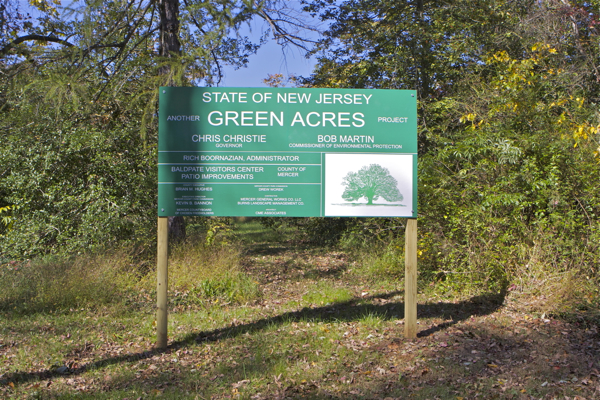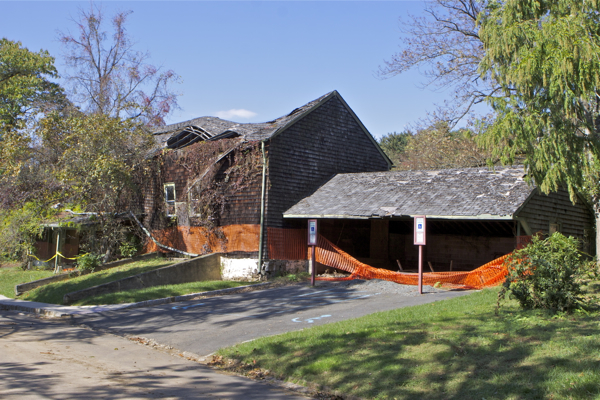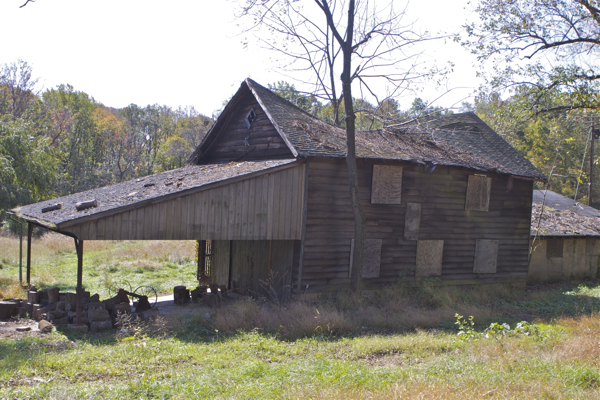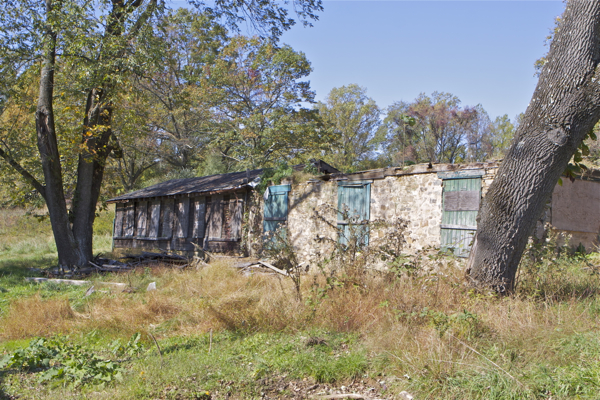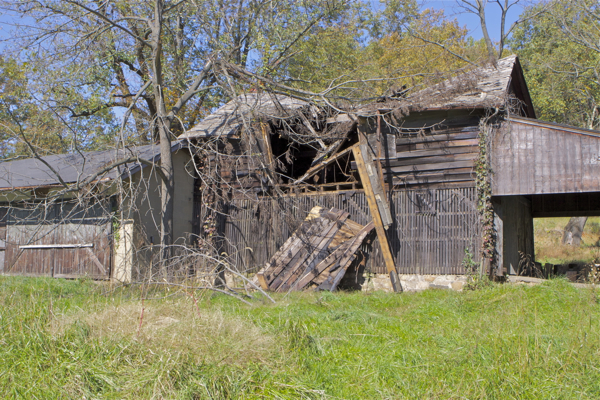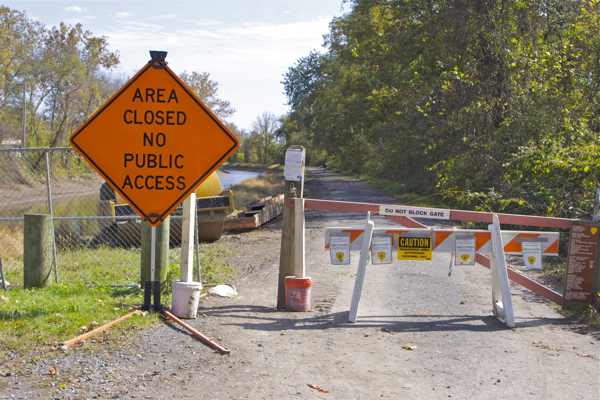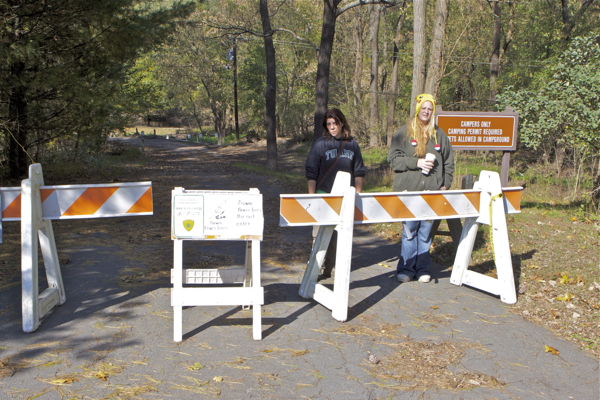Christie Hijacks State Plan – DEP’s Bob Martin: A “Paradigm Shift”
Planning Commission Drives the Getaway Car
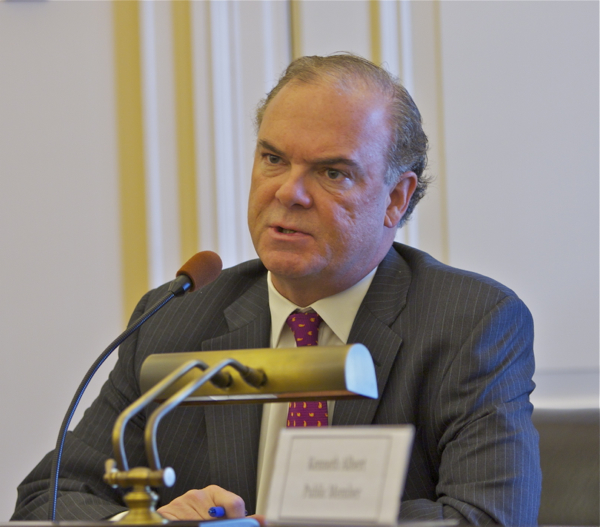
DEP Commissioner Bob Martin defends Christie Plan as a "paradigm shift"
[Update: 11/15/11 – Tom Johnson at NJ Spotlight does a nice job, see: Agency Approves Strategic Growth Plan Without Specifying Where the Growth Will Be – ]
Something truly extraordinary and unprecedented (in my recollection) happened in Trenton today.
The State Planning Commission formally approved – via unanimous votes – the following:
- Resolution No. 2011-06 Approval of Impact Assessment
- Resolution No. 2011-07Â Approval of The Statement Of Agreements and Disagreements (SAD) and Statewide Issue Response Team (SWIRT) Report and Completion Of The Cross-Acceptance Process (hit this link for those documents)
- Resolution No. 2011-08 Approval of Draft Final State Development and Redevelopment Plan and Draft Infrastructure Needs Assessment for Distribution and Commencement of Final State Plan Approval
Now the extraordinary part:
1) The Commission voted to approve these three Resolutions WITHOUT the presentation of the draft Plan that was listed on the Commission’s agenda or ANY discussion of the Plan or the other key documents approved (SAD, SWIRT and Infrastructure Needs Assessment);
2)  The Commission voted to approve all three Resolutions PRIOR TO allowing public comment;
3) In the most mind bending and perverse move of all (and that is saying something in light of actions #1-2 above), the Commission approved an Impact Assessment (dated December 21, 2009) SAD and SWIRT that were based on a draft Plan the Commission abandoned. The documents approved had nothing to do with the draft Final Plan they approved!
After the Commission approved the Resolutions, they allowed public testimony, but set a strict, arbitrary, and totally unnecessary 3 minute limit on testimony (only 10 people testified and the hearing adjourned before the 9:30 – 11:30 am hearing time published).
Bait and switch is too kind a description – how can you approve an assessment and cross acceptance Reports from 21 counties on a version of the Plan that no longer exists?
Even Wilma Frey of the moderate NJ Conservation Foundation (NJCF) said that those assessments “had no relevance” to the Christie Strategic Plan and called the Commission’s actions “intellectually dishonest“. (NJCF Executive Director Michele Byers was a member of the SPC for 10 years or more).
Sandy Batty of the Association of NJ Environmental Commissions (ANJEC) raised several concerns, the most important being that the local government officials and environmental commissions she works with had never even heard of the Christie Strategic Plan, never mind had an opportunity to review and comment on it.
Other environmental groups that have worked on State Plan issues for many years offered major criticisms, including the NJ Chapter of  Sierra Club, the American Littoral Society (ALS), and Stonybrook Millstone Watershed Assc.
As I wrote previously, the Christie Plan abandons both the State Plan Policy Map and the Cross Acceptance/Municipal Plan Endorsement process elements of the prior State Plan.
Hundreds of NJ Towns and thousands of residents had spent countless hours in the cross acceptance process, seeking to bring local Master Plans and zoning maps adopted under the Municipal Land Use Law (MLUL) in line with the State Plan.
All of that effort now is for naught, as the Christie Strategic Plan just abandoned the cross acceptance process, Â as well as the State Plan policy map.
[Update: funny, I don’t ever recall the Legislature adopting amendments to the State Planning Act to make this policy shift:
Traditional statewide land use planning must give way to strategic, action-oriented planning that integrates all relevant State resources. A conscious shift from managing growth to planning for physical change is also required. Coordinated investment will be the foundation for a new model that recognizes market conditions as a significant driver for change. (page 6)
I testified briefly to make a few general points:
- The Christie Strategic Plan abandons all non-market values
Planning, as an intellectual tradition and a profession, is informed by broad non-market values which are rooted in the concept of the public interest.
These values include beauty, fairness/equity, public health, natural resource conservation, and democratic participation in government processes.
Those values are encoded in the APA Code of Professional ethics and embedded in the State Planning Act pursuant to which the State Plan is adopted.
Yet the Christie Plan would replace the State Development and Redevelopment Plan (SDRP) with a singularly economic development oriented Strategic Plan that makes a mockery of non-market planning values and notions of the public interest.
The State Planning Act (SPA) authorizes the State Planning Commission to adopt a State Development and Redevelopment Plan (SDDRP) (see statutory objectives for the SDRP @ § 52:18A-200. ).
The SPA does not authorize or call for a narrow “strategic plan” or economic development strategy the Christie Administration is foisting on the State Planning process.
Of course Governor Christie, as Chief Executive, is empowered to issue Executive Orders and enact his own State Strategic Plan.
But he may not call that Plan the SDRP or hijack the State Planning Commission and the SDRP planning process to do so.
- The Resolutions are a Sham because they Approve Impact and Infrastructure Assessments that were based on the old State Plan. That Plan has been rejected by the Commission and replaced with the Strategic Plan
The Impact Assessment and Infrastructure Assessment documents are dated December 2009 (prior to the Christie Administration, which took office in January 2010).
Since then, the prior version of the State Plan was abandoned, rendering these assessments meaningless.
The State Planing Commission is now misleading the public by creating a false appearance that these prior assessments are based on the entirely different Christie Strategic Plan.
Wilma Frey said it best – this is “intellectually dishonest” (and shabby to boot!).
I addition, although the assessments make findings about reductions in air pollution, and water pollution, conservation of more than 50,000 acres of land, deep reductions in greenhouse gas emissions, the assessment documents fail to consider or to base those findings on facts in specific and directly relevant DEP functional plans.
The assessments fail to mention or incorporate the laws, policies, and regulations in applicable DEP functional Plans, including federally delegated State Implementation Plan ((air quality); Water Quality Management Plan or the State law mandated Water Supply Master Plan and Global Warming Response Act implementation plan, among others (there is a federal law structure transportation planning process that is ignored as well).
Worse, the Christie Plan requires that all State agencies, such as DEP, align their functional plans and program regulations with the Strategic Plan.
At a prior meeting of the State Plan Development Committee, DEP Assistant Commissioner Siekerka called this alignment process the “deconflicting” of DEP regulations.
Working in concert with the DEP proposed waiver rule, the State agency alignment process has a huge potential to represent an across the board rollback of DEP regulations, and result in violations of state and federal laws, which DO NOT recognize the State Planning Act or Christie EO 78. (more to follow specifically on this set of issues).
As I wrote previously, the Christie Plan explicitly criticizes and rejects the DEP WQMP program and Landscape Project Map.
The Landscape Project is one of the few positive developments of the Whitman DEP under Bob Shinn.
To his credit, Shinn emphasized mapping initiatives, cartographic expertise, technology, and development of “geographic information system” (GIS) capabilities at DEP.
The Christie Strategic Plan was supported by NJ Future, NJ Chapter of the American Planning Association (APA), the NJ Farm Bureau (on behalf of “landowners”); and a group called PlanSmart NJ. (more to follow on the NJ APA approval, which I feel is as important and unprofessional as the recent American Psychological Association’s ethics debate about psychologists who supported torture at Guantanamo Bay).
How can the Christie Plan be credible without either a Map or location criteria to apply the policies? How can a professional planner embrace that concept?
A I said before, that’s equivalent to writing the Plan in invisible ink.
[Update: after today’s hearing, I had a brief chance to ask a Ms. Mercer, who delivered the NJ APA testimony and is a former planner with the former  Office of Smart Growth, about the NJ APA review process. I also took strong exception to their support and several statements Ms. Mercer made during our brief conversation. I advised that although I was not a licensed PP, I wanted to open a dialogue to understand how a professional planning organization could possibly have supported the Christie Plan the SPC approved in draft form today.
So, not surprisingly, I just got an email from the  President of NJ APA, taking “some exception to to your recent opinion about our organization’s position”.
I assume this is not targeted at my characterization of their testimony (which I merely said “supported” the Christie Plan), but rather to other controversial issues I raised above.
Without going into that discussion here (as I said, more to follow), let me just say that I am pleased to open a dialogue and for now will post this ink to the NJ APA comments of Nov. 13. – end update]
Here’s a list of defects identified in a press release by NJ Sierra Club:
Violates State Planning Act- The Strategic Plan violates the State Planning Act because the Act calls for natural resource protection, protection of open space, with the environment and public health beings its main goals as we as infill and redevelopment as its priorities.  However the State Strategic Plan trumps growth over our resources. The State Plan itself is supposed to be a balance between growth areas and non growth areas while Strategic Plan is all about growth. Under the State Planning Act the State Plan is supposed to be based on other plans, but under this plan all other agencies plans are trumped by the Strategic Plan in violation of the Act.
Repeals Water Quality Management Rules – Attacks the Water Quality Management rules (WQMR) stating it hinders the ability of municipalities to have economic growth because it limits development in environmentally sensitive areas. Also these plans regulate septic for the first time with a third of New Jersey septic when tested shows levels of pollution from over development makes them more important.
Eliminates Landscape Project – The award winning Landscape Project is being threatened since the Governor wants to eliminate it because it is an important environmental planning tool and can be used to repeal numerous regulations. These regulations include flood hazard, stream buffer rules, sewers, wetlands, Highlands, Pinelands and habitat protections for endangered species.
Weakens Environmental Protections -Â Â Economic considerations are supposed to trump environmental protections and public health. The Plan states that all agencies plans and rules have to promote economic growth even in conflict with the environment. These include coastal rules CAFRA, Wetlands protection and Air Toxic rules. We believe this will also violate laws like the Clean Air Act, Clean Water Act, and even State Planning Act.
Removes Nongrowth  Areas – The State Planning Act prioritizes protecting environmentally sensitive areas and targeting growth for redevelopment while the State Strategic Plan only includes growth areas. The State Planning Act takes input from ‘other plans’, but under the Strategic Plan those plans are subservient to State Strategic Plan. Also the Plan eliminated Planning areas 4 and 5. The Strategic Plan clearly violates the State Planning Act.
Blocks Green Acres Funds – Under this Plan if a town or county wanted to buy a piece of property for open space that was in a growth area they would not be able to get Green Acres funds.  Also if Green Acres itself wanted to buy an important piece property in a growth area they would not be able to purchase it either. Green Acres plan and funding mechanism would be subservient to the State Strategic Plan. Many of our green acres acquisitions was proposed for development and growth areas and this would block those key acquisitions. Under this Plan would not be able to buy property in a growth area, which will have detrimental impact particularly in urban areas.
Weakening Highlands and Pinelands Protections – In the Highlands and Pinelands the ‘existing community areas’ are now growth areas in this Plan promoting development. We believe that the Strategic Plan will be used to promote more development in the Highlands and Pinelands undermining their Master Plans violating both those laws.
Open Space -Â Preservation of open space and natural resource are based on fee simple acquisition only this Plan does not call for preservation of natural resources through regulation or planning.
Executive Order 78 -Â Implementation of the plan is already underway before the public has chance to review. This EO takes the power away from the State Planning Commission and gives it to this new group in doing so violates the State Planning Act. Clearly stated this is a continuation of Red Tape Review designed to weaken standards and environmental protections.
Attacks on Labor & Civil Service – The Plan also goes after labor and civil service, which has nothing to do with planning
Super Commission – State Strategic Plan and Executive Order is under the Business Action Center not under any planning agency. This sets up a super commission chaired by the Lieutenant Governor acting as if she is a lobbyist for developers.


